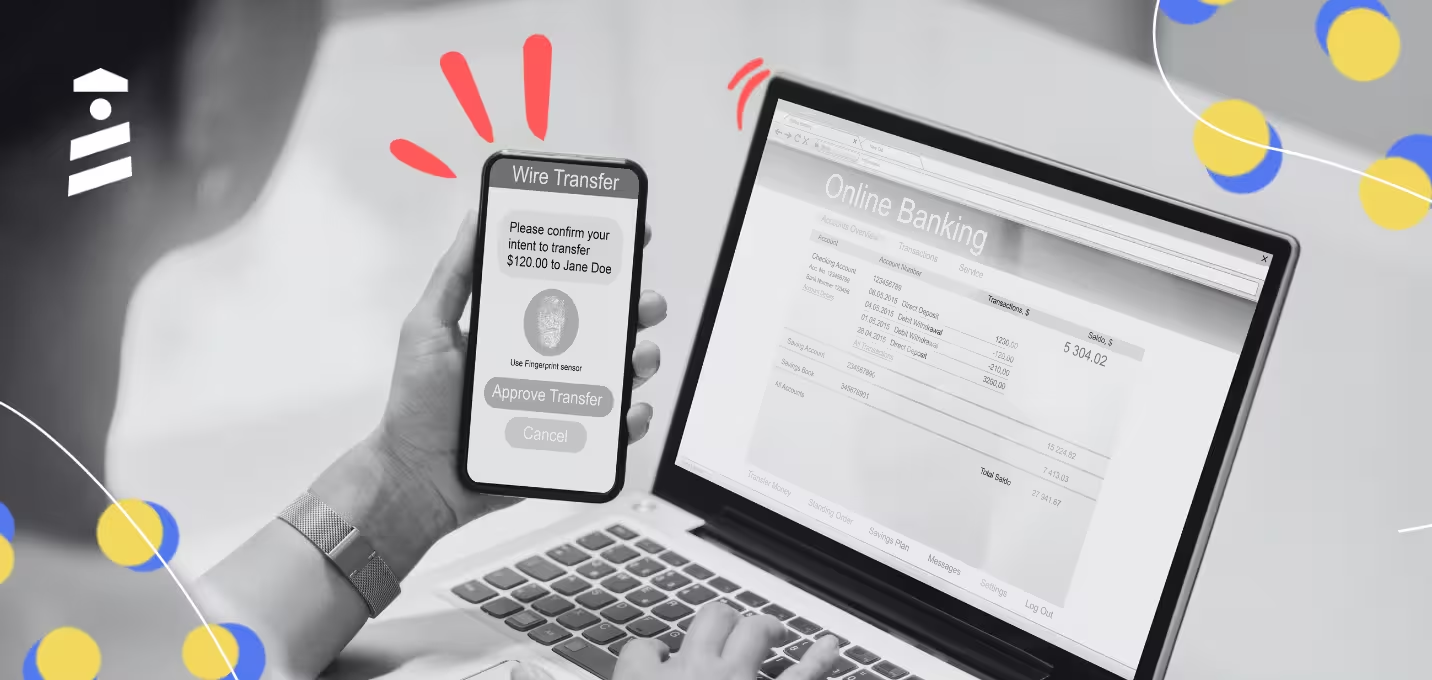

I remember a story that our middle-school teacher told us one day about measurements.
She said:
Before a standard was brought to measurement systems, "one foot" literally meant the length of a foot. When a woman asked for a 3-foot-long curtain, she would get something longer or shorter depending on the foot size of the tailor.
So... About the growth of your SaaS business.
Funny enough, many people aren't aware that not every KPI is the best fit for every aspect of a business.
For instance, while it's totally normal to depend on the overall churn rate for the finance team, the growth team should dig deeper and see the difference between annual and monthly churn rates, while also keeping customers that can't churn in mind.
I know that it sounds complicated, but I will explain each of them in detail in just a few minutes.
So...
What is your approach?
Do you measure your growth the old fashion, first-gen metrics way, or the advanced growth-specific metrics way?
And there is also the SpongeBob way, which you probably don't want to use:

That's why I gathered the ten most important metrics that are related to growth.
Here is a list of which ones I will talk about:
- MRR and ARR
- Customer Churn and Annual Churn
- Revenue Churn
- Customer Lifetime Value (CLV-LTV)
- Customer Acquisition Cost (CAC)
- LTV to CAC ratio
- Net Revenue Retention (NRR-NDR)
- COGS and Gross Margin
- CAC Payback Period
- Rule of 40
I have some tips about how to read this article as well:
- I will be elaborating on every single metric and digging deep into their use cases. Try to find information about your main use cases and areas of development while reading, and don't try to focus on all of them.
- While deciding on which ones to adopt for your growth strategies, keep in mind that the lesser the better. Don't focus on five metrics at the same time, pinpoint your weak and strong areas, and elaborate on them.
- I will be including metrics for both a sales-led and a product-led growth model, and I will be mentioning the main use cases. You are welcome to ignore it, I will be giving information about why those specific growth metrics apply to those models.
And that's all from me.
Without further ado, let's start with the first metrics:
1- MRR and ARR
MRR stands for Monthly Recurring Revenue, and ARR stands for Annual Recurring Revenue (or Annualized Run Rate). Though these two metrics are fellow members of the "traditional old-school metrics" family, they make up the base for many more advanced metrics.
Thus, you should have a full understanding of those two metrics so that you can proceed.
MRR is simply the estimated monthly income of your company
Here is how to calculate MRR:

Let's say that you have a SaaS company called RATES, and 2 different pricing plans.
Plan A costs $50/month, and Plan B costs 80$/month.
If you had 20 Plan A users and 12 Plan B users, you would calculate your MRR like this:
(50×20)+(80×12)=1,960
If you have a majority of monthly subscribers, you can possibly prioritize MRR over ARR.
ARR is simply the estimated yearly income of your company
To calculate ARR, you can simply multiply MRR by 12.
So the ARR of our little SaaS company RATES we mentioned above has an ARR of:
1,960×12=23,520
If you have more annual subscribers and yearly investments, ARR will give you a clearer picture than MRR.
Calculating MRR and ARR gives you a base to:
- See whether your pricing policy is on point or if it needs to be increased/lowered.
- Have a great metric in hand to compare with other metrics / develop other metrics.
And after you know how much you have gained, it's time to learn how much you could have gained:
2- Customer Churn and Annual Churn
Just like MRR and ARR, Customer Churn and Annual Churn are indicators of how many users you have lost within a certain period of time - a month or a year.
It becomes more crucial to track churn rates as you grow. That is because it is easier to replace the few churned customers, but it becomes more and more difficult since a 5% churn rate for a company that had 2M users means that they lost 100K users in a single month.
Customer Churn Rate:

RATES had a total of 12 users last month. But this month, we, unfortunately, lost two of them.
This gives us a customer churn rate of:
2÷32=0.0625 ➡ %6
The ideal monthly customer churn rate for a SaaS company is below 1%.
Of course, this rate can rise up to 3% for startups and small businesses.
So I would say that our company didn't do great in terms of retaining the customers.
Annual Churn
This time, we won't be multiplying our monthly churn with 12.
Instead, you can use this formula below to predict it:

Keep in mind that a 6% monthly churn rises up to 54% of annual churn if you don't acquire as many customers each month. Thus, it is crucial to trach both monthly, and annual churn get a clearer idea of your growth speed.
The ideal annual churn for a SaaS company is between 5-7%.
Also, there are two things that the monthly-annual churn difference makes easier to find:
- Customers that can't churn: if a customer is bound to pay with an annual contract or such, they are considered "customers that can't churn". To keep the balance between monthly and annual churn rates, you can aim to increase the number of those customers.
- Churn cohort: By grouping customers with similar attributes and patterns, you can easily detect churn reasons and fight churn more effectively.
3- Revenue Churn
I will first continue with the example and then start to explain. You will understand why once you read it.
Here is the formula, nevertheless:

So, we had 2 customers that churned, right?
But were they using Plan A or Plan B? How much revenue did we lose with 2 customers?
Let's say that they were both $80/month Plan B users.
Our previous MRR was 1,960, so:
160÷1960=0.081 ➡ 8%
You see, our customer churn rate is only 6%, but our revenue churn is higher with a heartbreaking 8%.
So, the Revenue Churn Rate indicates how much money you failed to retain month over month.
Of course, any company will be acquiring new customers, which might increase revenue and decrease revenue churn. However, for the sake of simplicity, RATES doesn't get any new customers this month.
If we had gained more customers than we lost last month, our revenue would be higher, and our revenue churn would be a negative value.
4- Customer Lifetime Value (CLV-LTV)
Customer Lifetime Value, or simply Lifetime Value, indicates the value and revenue a single customer brings to your business. It is calculated by multiplying the average customer lifetime by your Average Revenue Per User rate (ARPU).

The longer a user keeps using your services, the higher their CLV rate is.
It is important to know your CLV in order to make accurate predictions about your payback point (which will be mentioned below) and CAC optimization.
I know I haven't explained CAC either, so here it comes:
5- Customer Acquisition Cost (CAC)
As the name suggests, the Customer Acquisition Cost is the amount of money it takes to acquire each customer. If you had spent $50K one month on customer acquisition and got 500 new customers within that month, your CAC would be $500 per user.
If your CAC is going upwards, you should either cut down your expenses, change strategies, or focus on retaining and upselling to existing customers rather than spending hundreds on acquisition.
The importance of CAC is not limited to this, though.
Here is the next metric you should keep an eye on:
6- LTV to CAC ratio
Comparing the Customer Lifetime Value and Customer Acquisition cost benefits you in multiple ways:
- It helps you determine the success of your sales and marketing expenses,
- It helps you pinpoint the reason for your churn rates (depending on LTV),
- It helps you remain on par with your competitors in terms of acquisition spending.
Let me clarify it with our RATES example.
Let's say that the LTV of each customer of RATES is $1,500, and the CAC is $300.
Sounds great, right?
But let me warn you, this rate of 1:5 is not great.
The ideal CAC:LTV ratio for a SaaS company is 1:3, and:
🚩 Having a great gap between CAC and LTV that ends up in a 1:5 ratio or more means that you don't spend enough on your customers, and you might be facing high churn rates in the near future.
🚩 Having little to no gap between CAC and LTV means that your profit is close to zero, and you have to start making money ASAP.
So what RATES should do at this point is to start spending $200 more on customers.
How?
Improve the onboarding process.
Focus a bit more on personalization.
Offer them a small reward, such as a free webinar, or maybe even a customized box of sweets.
Or any other great growth hack that you can adopt. Here are some of the ideas that scream "GENIUS!"
7- Net Revenue Retention (NRR-NDR)
Net Revenue Retention (NRR) or Net Dollar Retention (NDR) is another SaaS KPI that analyzes the percentage of revenue recovered from current customers over a particular time period (typically monthly revenue or yearly revenue), taking into account upgrades, downgrades, cross-sells, and cancellations.
This metric is a key metric to determine risks and pitfalls on a monthly basis.
A good NRR for SaaS is 130 percent for clients who purchase $5,000 or more, and 140 to 145 percent for customers who pay $50,000 or more.
This is another illustration of how it does not have to dip down as your business scales. Scaling the SaaS firm to outsiders with a valuable product is worth 30 to 35 percent of the investment.
8- COGS and Gross Margin
COGS stands for Cost Of Goods Sold, which are all expenses related to serving clients and providing your solution. COGS is not the same as CAC because CAC is based on sales and marketing-related expenses while COGS is broader, covering things like app hosting fees and/or support costs.
The Gross Margin, on the other hand, is the amount of revenue money left after you take out the expenses.

RATES had an MRR of $1,960 and a CAC of $300. Let's say that the company spent another $200 on COGS, which concludes in $500 in total expenses.
The Gross Margin of RATES would be:
(1,960-500)÷1,960=74.4% (or $1460).
Let's see what David Cummings has to say about this rate:
"Gross margin is also a reflection of how valuable a dollar of revenue is to the business. If the company is an ecommerce business with 20% gross margins (commodity products) vs a SaaS business with 80% gross margins, every additional dollar of revenue for the SaaS business is equivalent to four dollars in the ecommerce business (due to the much higher contribution margin). Margin is one of the main reasons a $10 million revenue company can be more valuable than a $100 million revenue company."
9- CAC Payback Period
The Customer Acquisition Cost Payback Period is how long it takes for you to pay out your initial Sales and Marketing investments into the business and start making an actual profit from each customer.
In our hypothetical company RATES, the average CAC is $300, and a Plan A customer pays $50 every month.
This means that the CAC Payback Period of RATES is 6 months.
The goal of the CAC Payback Period is to make it shorter in time. As obvious as it is, there are two ways to do that:
- Reducing your CAC by either cutting costs or increasing acquisition speed.
- Re-adjusting your pricing options.
See if you can increase your prices with minimal costs. Try to figure out if you are undervaluing your services because of social pressure.
Once you figure that out, there will be only one thing left to adapt to:
10- Rule of 40
The Rule of 40 claims that your profit margin and growth rate combined should be more than 40.
Provided it is, then it means that your company is now valued twice as more as a company that didn't beat the Rule of 40.
Here you can learn more about the rule of 40 and how to maintain a healthy relationship with your growth.
Conclusion
Here is a quick summary of all the little information within this article:
- Different business models need to adopt different metrics to track actual success.
- It's not a sin to change ot stop tracking a metric if it didn't provide the expected results within a period of time.
- The average growth rate is too big of a metric to be helpful to software companies to track growth over time, you need to dig in deeper sometimes.
- In other words, traditional metrics are cool but the next level of growth needs next-level metrics.
- SaaS metrics have a tendency to lose efficiency within a certain time period since the expectations and behaviors of your customers change as well.
P.S: I figured you might want to know about the pirate metrics as well since they are trending nowadays, so here I leave a great guide about them and how to make the best out of them.
Bonus: You can dive deeper into SaaS by taking a look at our SaaS statistics article!
Frequently Asked Questions
What are growth metrics for a SaaS?
The most important growth metrics for SaaS are MRR, ARR, Churn Rates, CLTV to CAC ratio, NRR, COGS, and Gross Margin.
What is a good revenue growth rate for SaaS?
Although a firm’s revenue growth rate is affected by a variety of circumstances, any company with a revenue growth rate of 10% or above is deemed good. However, in other circumstances, a growth rate of 2 or 3 percent is considered healthy.
What is one of the most important metrics in a SaaS model?
The importance of the metrics changes from team to team and business to business. However, for overall success detection, it is good to keep an eye on your Monthly Recurring Revenue (MRR) rate.

















.svg)
.svg)
.svg)
.svg)
.svg)

.svg)
.svg)












.svg)
.svg)




.png)

















